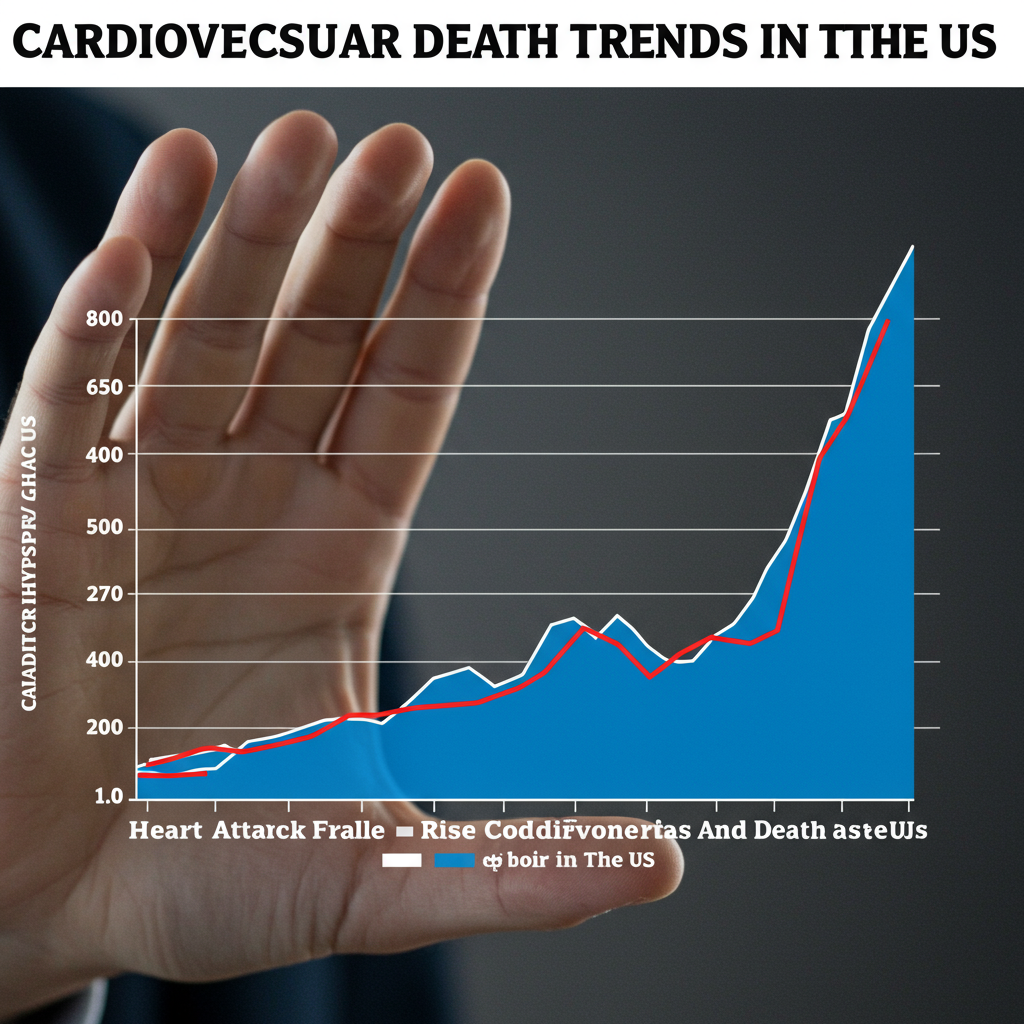Heart disease remains the leading cause of death globally. However, dramatic shifts are occurring in how Americans die from cardiovascular conditions, according to a significant new study published in the Journal of the American Heart Association.
Over the past five decades, the United States has seen remarkable progress in combating overall heart disease mortality among adults aged 25 and older, with a 66% decline in death rates. The most striking success story is the near 90% drop in deaths specifically attributed to heart attacks (also known as myocardial infarction).
This impressive reduction in heart attack fatalities is a testament to major advancements made over the last 50 years. Improvements in recognizing heart attack symptoms earlier, faster access to emergency medical care, and the development of life-saving treatments like clot-busting drugs, stents, and bypass surgery have transformed acute heart events that were once frequently fatal into conditions many more people now survive.
“Over the past 50 years, our understanding of heart disease, what causes it and how we treat it has evolved considerably,” noted lead study author Dr. Sara King of Stanford University School of Medicine. Experts highlight the significant strides in helping individuals survive what were previously considered death sentences.
The Alarming Rise of Other Heart Killers
Despite the positive trend in heart attack survival, the news isn’t all good. The study reveals a concerning flip side: deaths from all other types of heart disease have collectively surged by a staggering 81% in the U.S.
These other categories include:
Heart Failure: A chronic condition where the heart can’t pump enough blood to meet the body’s needs. Deaths from heart failure increased by 146% between 1970 and 2022.
Hypertensive Heart Disease: Damage to the heart caused by persistent, poorly managed high blood pressure. Deaths linked to this condition rose by 106%.
Arrhythmias: Irregular heartbeats, such as atrial fibrillation (A-fib), which occur when the heart’s electrical signals go awry. Deaths from arrhythmias saw the most dramatic rise, skyrocketing by 450% over the five decades. Once rare causes of death, arrhythmias now account for about 4% of all heart disease deaths.
This shift means that while heart attacks accounted for 54% of all heart disease deaths in 1970, that figure dropped to just 29% by 2022. The burden of death has moved significantly towards heart failure, hypertensive disease, and arrhythmias.
Understanding Why the Trends Are Changing
So, why are we getting better at preventing heart attack deaths but losing ground on other types of heart disease? The answer lies largely in the dramatic increase of common cardiovascular risk factors across the population over the past 50 years.
Key contributing factors on the rise include:
Obesity: Prevalence increased from 15% in 1970 to a concerning 40% by 2022.
Type 2 Diabetes and Prediabetes: These conditions now affect nearly half of all U.S. adults.
High Blood Pressure (Hypertension): The rate climbed from approximately 30% in 1978 to nearly 50% by 2022.
Poor Diet and Physical Inactivity: These lifestyle factors contribute significantly to the conditions above.
An Aging Population: The large Baby Boomer generation is now entering the age range where heart disease risk naturally increases.
These escalating risk factors fuel the development and progression of chronic conditions like heart failure, hypertensive heart disease, and arrhythmias, driving the increase in deaths from these causes.
Living With Heart Disease: Beyond Survival
As study authors and other experts point out, surviving a heart attack is a major medical victory, but it doesn’t always mean a return to full health. Many survivors, and a growing number of people with the rising forms of heart disease, live with significant ongoing health challenges.
Conditions like heart failure can lead to constant shortness of breath and limit daily activities. Managing heart disease often requires a complex regimen of medications for blood pressure, fluid retention, and cholesterol, impacting quality of life. As one expert commented, “It’s one thing to be alive, it’s another to be alive and well.”
The Critical Importance of Prevention
The findings underscore a crucial message: the battle against heart disease hasn’t been won; it has simply changed focus. While treating acute events is more successful, the rising tide of chronic heart conditions demands a renewed emphasis on prevention.
“Heart disease hasn’t gone away,” stated senior study author Dr. Latha Palaniappan. “The focus now must be on helping people age with strong, healthy hearts by preventing events.”
Prevention is key, and it needs to start early. Proactive steps individuals can take to protect their heart health against these rising threats include:
Maintaining a healthy diet rich in fruits, vegetables, and lean proteins.
Engaging in regular physical activity.
Achieving and maintaining a healthy weight.
Avoiding smoking and limiting alcohol intake.
- Effectively managing existing conditions like high blood pressure, diabetes, and high cholesterol, including adhering to prescribed medications.
- www.wxyz.com
- www.city-journal.org
By addressing the root causes – the escalating risk factors – individuals and public health efforts can work together to curb the rise in these increasingly deadly forms of heart disease and help more Americans not just survive, but thrive, with healthy hearts.




